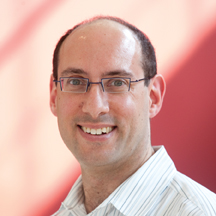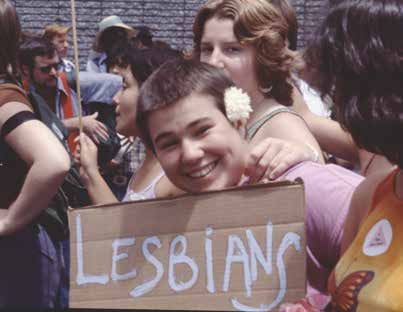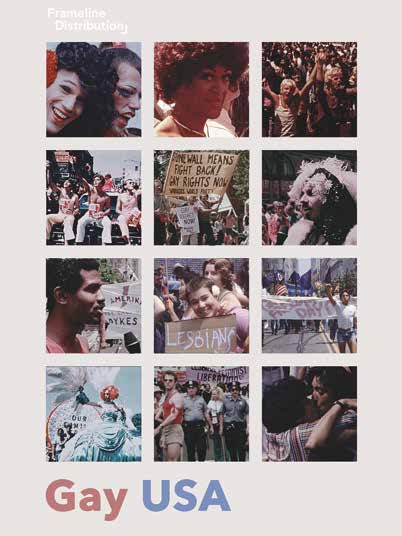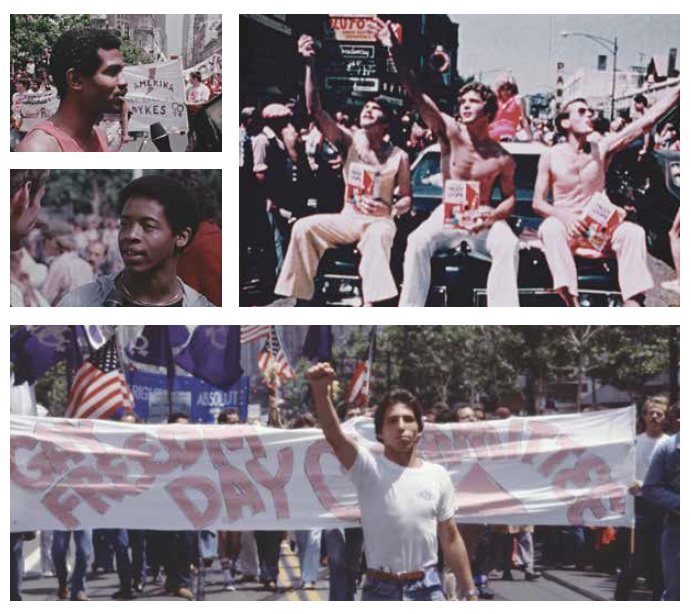
By Gary Kramer–
The San Francisco GLBT Historical Society Museum and Archive is hosting a special screening of the late, great, gay filmmaker Arthur J. Bressan, Jr.’s landmark 1977 documentary Gay USA on August 21 at 6 pm. (The event is free with registration; a $5 donation is suggested.) Queer film historian and co-director of the Bresson Project, Jenni Olson, will moderate a discussion and Q&A about the film following the online screening. Don Romesburg, a cofounder of the GLBT Historical Society Museum, will also speak. The event is being presented as part of the museum’s exhibit Labor of Love: The Birth of San Francisco Pride, 1970–1980.

Newly restored, Gay USA chronicles gay pride parades held on June 26, 1977, in San Francisco, New York, San Diego, and Chicago. The film offers a snapshot of attitudes and experiences of lesbians and gays, straight allies, drag queens, and homophobes through a series of on-the-street interviews conducted by various camera crews. In some cases, the interviewers ask, “Are you gay?” a question that generates a number of interesting responses. Some interviewees recount the empowerment they feel being out, while others describe the harassment they have encountered as a result of being identified as gay. It is a fascinating film and Bressan assembled a cross-section of humanity, featuring men and women, old and young, gay and straight, from various religious and racial backgrounds. The result makes queer lives visible.
Olson chatted with me for the San Francisco Bay Times about Gay USA, Bressan, and her upcoming panel.

Gary M. Kramer: What can you say about the August 21 event, and what should people expect?
Jenni Olson: It’s not a passive panel discussion online. We want it to be participatory, a crowdsourced queer history experience. It’s a community history project, where people who were at those pride parades in 1977 or around at that time can chat and contribute and tell our history. We’ll watch the film together and have people shout out during the screening and say, “Hey, that’s my ex-boyfriend!” In Gay USA, there are a few people in it who are notable—Pat Parker, the African America lesbian poet, and Stuart Loomis, who does an amazing job telling the history of Stonewall and is a key interviewee. But there are tons of other people who are not identified.
Gary M. Kramer: Can you talk about the response Gay USA had when it was made nearly 50 years ago, or how it has been received since then?

Jenni Olson: It’s particularly interesting that it was the first gay made, gay documentary. It was released a couple of months before Word Is Out, which is an incredible film and has had a much higher profile over the years. Gay USA did have a limited theatrical release. It was a grassroots effort, and it played 50 cities and was reviewed in mainstream newspapers in big cities. It got a fantastic response from gay audiences, but the straight reviews felt it was propagandistic. All the more reason for it to be released at that time!
Gary M. Kramer: The film is as successful as it is ambitious in capturing same-sex affection, attitudes about sexuality, coming out stories, anecdotes about harassment, and discussions of “dyke” being embraced or offensive. But the best is Pat Parker, who recites her poem “But Gays Shouldn’t Be Blatant.” Can you talk about the power of these scenes then and now? (Editor’s Note: Read the poem at http://www.qrd.org/qrd/misc/text/pat.parker-poem )
Jenni Olson: Arthur was a very political filmmaker, and gay liberation was what he was all about. He had an incredible sense of urgency in all his filmmaking. Gay USA was made in the aftermath of the gay bashing of Robert Hillsborough and right as Anita Bryant was ascending with her “Save Our Children” campaign. There was intense, blatant, and vicious homophobia on a national level. Arthur—and the whole community—sensed being under attack, so he mobilized filming in different cities. He wanted to show us speaking out, being ourselves on screen, discussing the issues on our minds, from oppression to the celebration of sexuality, and the politics of gender identity and sexuality. It’s fascinating to look at. This film documents gay people talking to other gay people, which is incredibly powerful.
Gary M. Kramer: I like that the film showcases the diversity of the LGBT community. Do you have thoughts on this as the film has lesbians and gay men recounting coming out and moving to San Francisco from places like Kansas because they felt it was a safe space?
Jenni Olson: Loomis says we have people in the community who have no choice about being out. They are out, and visibly different. He talks about how courageous these people are. He says, “Today we join them, and hold hands,” acknowledging how important those folks are. He’s saying we need to be radical. These people are on the front lines and we owe them.

For more information, visit:
https://www.glbthistory.org/events/2020/8/21/revisiting-gay-in-the-usa-a-community-experience
© 2020 Gary M. Kramer
Gary M. Kramer is the author of “Independent Queer Cinema: Reviews and Interviews,” and the co-editor of “Directory of World Cinema: Argentina.” Follow him on Twitter @garymkramer
Published on August 13, 2020
Recent Comments